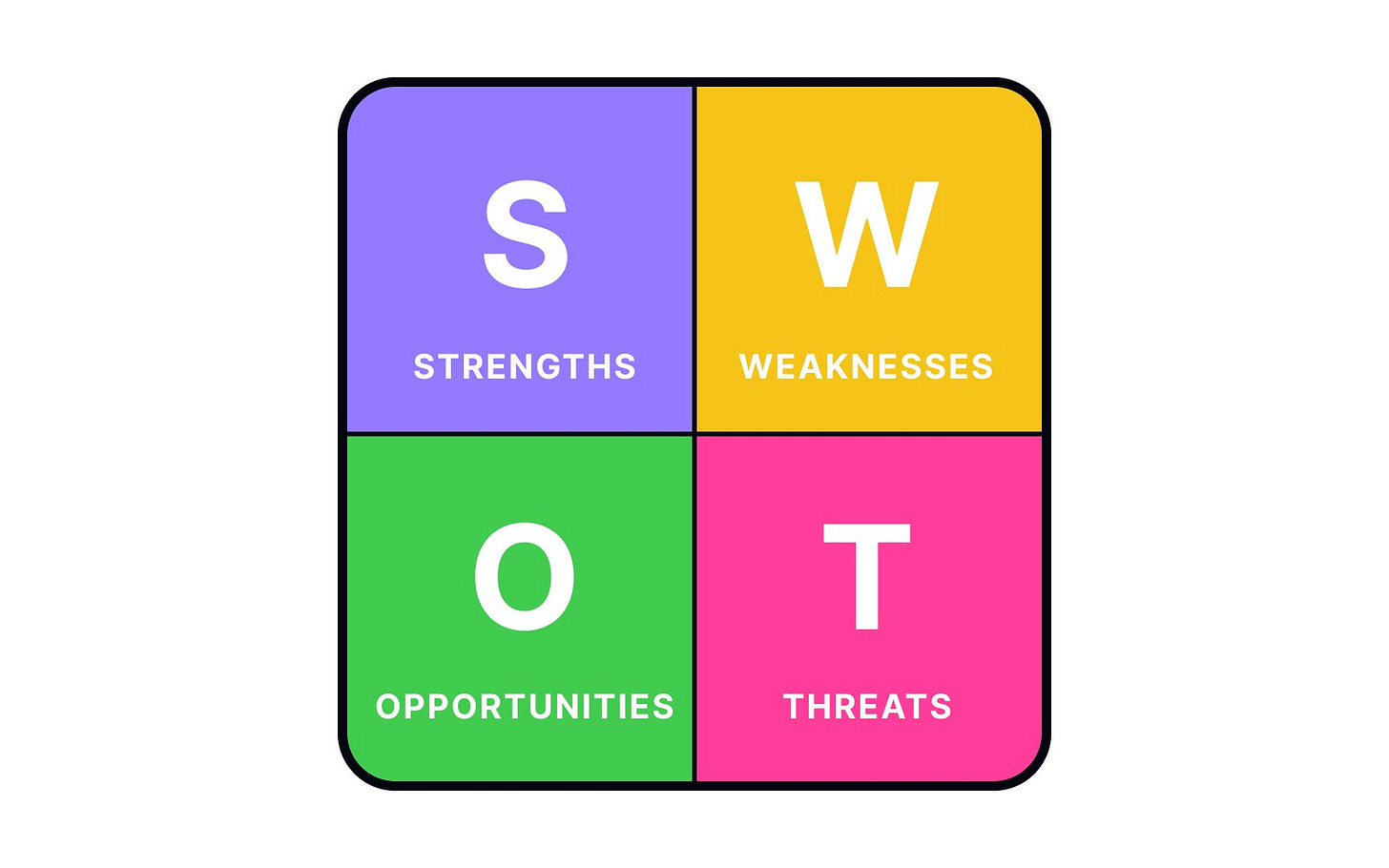The CEO's Guide to an Excellent Offsite
Here's my approach to executive offsites. See all the components I include, and download a customizable agenda.
Do your mission, vision, values, and strategic objectives need a refresh?
With the help of Xpertloop, I trained an AI agent on how to create, refine, and sharpen these elements, which I call your 1-Page Strategic Plan.
The agent works whether you’re starting from scratch or updating. Try it free:
There are certain planning and coordinating activities every CEO must perform on a regular basis, often in concert with the executive team. These activities become the beating heart of the business.
Over my career, I've found that quarterly offsites are one of the most critical aspects of maintaining that rhythm and consistency.
When I say "offsite," it's actually a bit of a misnomer. They don't always have to be physical offsites. But there are two good reasons to make them offsites at least twice a year:
If your team is scattered across different locations, getting people together in the same place has a lot of value. Research finds that face-to-face interaction prompts more innovation and team formation.
As we’ll see, the great value of offsites is intentionally stepping out of the daily flow of business. Getting people into a fresh, interesting, stimulating, or relaxing environment can subtly help the team break patterns and see new possibilities. (As I’ve written about before, the “turf” of a meeting matters.)
Without regular offsites, it’s easy to lose the holistic perspective on the business and for silos to develop in the organization. Let’s start by looking at some of the logistical details of a great offsite practice.
Timing and Logistical Matters
Scheduling
Holding your offsite with the executive team quarterly is the ideal rhythm. This aligns with a solid quarterly goal-setting practice.
Plan for two days of work at the offsite. You’ll see this reflected in the agenda template later in this post.
I like to schedule the offsite 2-3 weeks after quarter end. This gives you time to set the new quarter's goals before everyone convenes at the offsite. As discussed below, these new goals will be sanity-checked and refined with the executive team.
Consistency is key. Set quarterly offsite dates a year in advance. Treat them as non-negotiable appointments with your company's future.
Attendance
Every member of the executive team should attend. That includes you, the CEO, and hopefully each leader you have overseeing the six core departments of the company.
Other likely attendees include your Chief of Staff and/or EA. I also like to occasionally invite a high-performing or high-potential employee to join the offsite. It’s a development opportunity for them and a chance to bring a new perspective into the executive discussion.
Optionally, a presenter on a specific topic may be invited for a session. For example, I have sometimes included in offsite agendas an hour-long workshop on CliftonStrengths, facilitated by a Strengths Coach.
Facilitation Guidelines
The CEO drives. As CEO, you own the vision, and this is your meeting. It’s critical that you remain engaged and curious throughout the offsite, and that you steer discussions back to relevance when they start to drift.
Limit distractions. As an offsite progresses, it’s common for executives to retreat into their phones and especially their laptops. Set ground rules to prevent this. Focus truly is the most precious resource, and you must conserve it in offsites.
Encourage debate. Watch for groupthink. Assign rotating roles like devil's advocate to challenge ideas constructively. Don’t force consensus where it doesn’t exist. Instead tease out the core of the disagreement and ask smart questions about why this disagreement exists.
Keep it moving. Plan for each topic to last between 45 minutes to an hour and a half. Give people space between sessions. Schedule time for snacks, short walks, lighter activities, etc.
Essential Components of the Offsite
Now, what about the actual content of the offsite? Here are the core components I include.
1. Start with SWOT Analysis (30 minutes)
I always start offsites with a SWOT analysis. The purpose is twofold: get everybody thinking and contributing, and get an updated picture of where we stand as a business.
When you do a SWOT analysis, people will be happy to list all the strengths and how wonderful everybody is in the organization. But when it comes to weaknesses and threats, often people tend to clam up. They don't want to say what's weak in the organization or what could spell doom ahead. They don't want to admit anything isn't perfect. They think they might offend somebody. Lead by example by being transparent in your assessment of threats and weaknesses, and when someone is candid, thank them for their honesty.
How to Run the SWOT Analysis:






